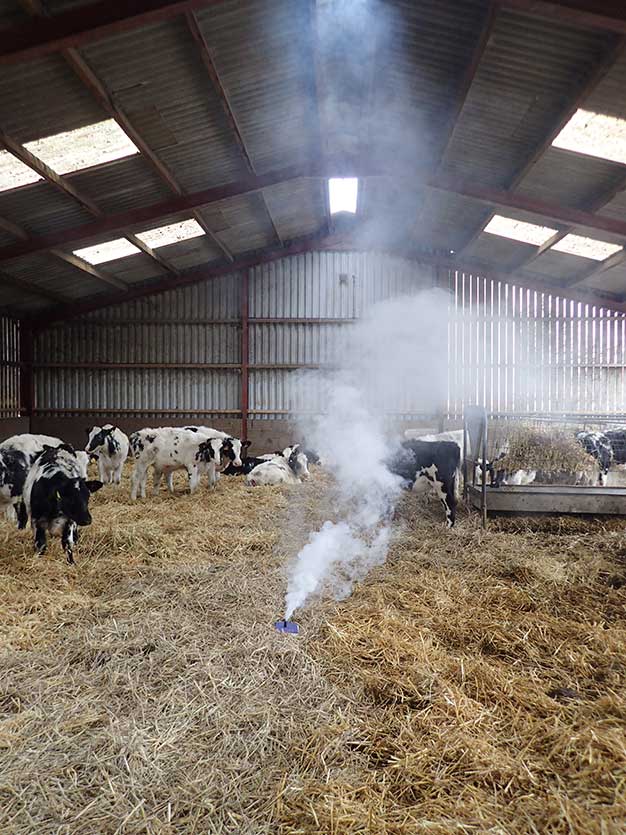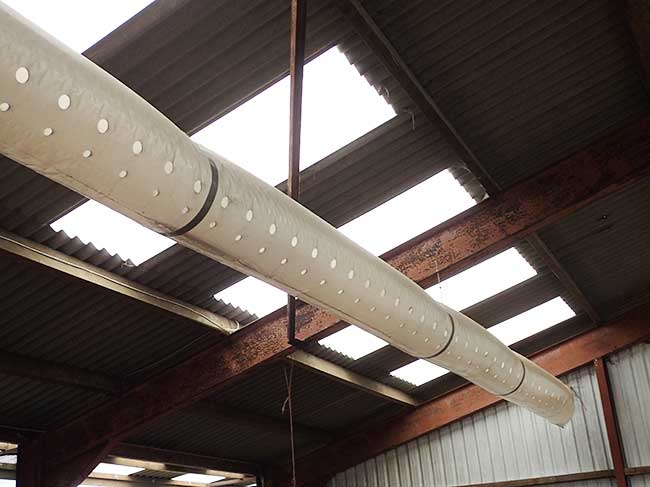16 Feb 2021

Bovine respiratory disease (BRD) is arguably one of the most complicated mammalian diseases (Richeson and Falkner, 2020), with the huge economic impact it has on the cattle industry well documented (Andrews, 2000; Chirase and Greene, 2001).
The disease represents a complex interaction between host, pathogen and environment. It starts with a stress-induced immunosuppression and infection with one or more viruses, and culminates with bronchopneumonia caused by otherwise commensal bacterial organisms that originate in the nasopharynx.
Despite decades of research, and the commitment from both vets and farmers to tackle this disease, no significant reduction in the mortality or damage attributed to this disease has been seen (Smith et al, 2020). So, how can we better apply the knowledge base we have to better manage BRD?
BRD can be caused by a number of pathogens. Viral agents include bovine respiratory syncytial virus (BRSV), parainfluenza III virus, infectious bovine rhinotracheitis and bovine viral diarrhoea virus, and it is often suggested these, along with the mycoplasmal agents (Mycoplasma bovis, Mycoplasma dispar and Ureaplasma species) are the primary infectious agents.
With the exception of certain instances of BRSV, fatality is usually not associated with viral infections alone; instead, their roles are primarily to assist in establishing a respiratory environment that is favourable to colonisation and replication by several pathogenic bacteria, including Mannheimia haemolytica, Pasteurella multocida and Histophilus somni.
Antimicrobials remain the mainstay of most treatment regimens for BRD, and in around 82% of cases positive response to treatment can be seen (Johnson and Pendell, 2017). However, 14.9% of calves treated for BRD also receive a second treatment, and then 12% of those cattle go on to receive a third treatment.
Of the cattle that receive a third treatment for BRD, 37.9% respond favourably to the treatment, 22.1% are diagnosed chronically ill and 30.5% die despite the treatment.
While these figures highlight the relatively low number of BRD treatment failures that occur, it is important we do not underestimate the impact these treatment failures have – both in terms of the financial cost (medicine costs, time for treatment and management of affected animals, as well as potentially the cost of losing the animal), but also in terms of animal welfare and the impact it has on staff (for instance, morale or belief in treatment protocols).
A tendency exists, when faced with a treatment failure, to simply reach for a different antimicrobial, and I can guarantee we have all come across those chronic pneumonia cases on farm that have had multiple courses of different antimicrobials – all to no avail. In many cases, simply changing antimicrobial therapies will have minimal impact on outcomes (Booker and Lubbers, 2020).
It is important we, as veterinary surgeons, are engaging with our clients on treatment outcomes and regularly reviewing treatment protocols. In the same way that BRD is driven by complex interaction between host, pathogen and environment, many BRD treatment failures are found to result from interactions between the host, pathogen, environment, treatment and treatment administrator.
Treatment failures tend to be immediately blamed on antimicrobial resistance, and while reports of antimicrobial resistance are increasing (Portis et al, 2012), often treatment failures can be traced back to errors or delays in disease detection, errors in medicine handling and administration or poor host immunity resulting from management factors such as failure of passive transfer or a poor environment.
One of the key determinants of treatment success is how rapidly therapy is initiated. More than 50 antimicrobial products are licensed for the treatment of BRD in the UK. While each of these products will have different pharmacokinetic properties (for example, Tmax or Cmax), clinically the rate determining steps in achieving effective concentrations at the site of infection is most likely going to be how rapidly the diseased animal is identified and how quickly steps are taken to administer treatment.
Technology is beginning to be implemented as a means of speeding up the detection of BRD on farm. Thermometry is being increasingly used, either via direct monitoring devices such as reticulo-ruminal boluses and eartags, or through remote technology such as infrared thermography.
The monitoring of other parameters, such as feed intake and activity, are showing promise as a means of early detection. The application of technology to enable early disease detection will hopefully reduce the number of treatment failures, minimise disease spread within groups of animals, as well as potentially offering the opportunity for treatment with a NSAID alone.

While maximising treatment efficacy, it is important the ultimate goal should always be disease prevention. BRD is a multifactorial disease complex and it is important to consider all the potential risk factors when looking at control programmes. One area of focus is the use of vaccination. We are privileged to have several different vaccines available to us, but market penetration is not as high as it could be.
Continued efforts to reduce antimicrobial usage on farms have driven an increase in the uptake of vaccines for pneumonia, from an estimated 29% of eligible animals being vaccinated in 2011 to 40% in 2018 – an increase of more than 30% (Agriculture and Horticulture Development Board, 2018).
When considering vaccine programmes, it is important we look at the specific set of disease challenges and risk factors present on each farm; a “one size fits all” programme for BRD is not available. Vaccines must be used as an intervention at the critical control point in BRD pathogenesis, rather than simply being administered to high-risk, stressed calves under high infection pressure.
The structure of the UK beef and dairy industries can present some challenges to the implementation of truly effective vaccination programmes. The best time to vaccinate cattle against BRD causative agents is when they are in a state of immunologic homeostasis, free of acute infection and at least several weeks before natural BRD challenge is expected.
Ideally, animals should be vaccinated well before any sales or movements; however, outside integrated supply chains or in the absence of cattle buyers being willing to pay a premium for vaccinated cattle, the drivers for vendors to vaccinate calves pre-sale are not there. If the UK cattle industry is to truly reap the benefits of vaccination for BRD, a holistic approach to it is required across the supply chain.
Ventilation is essential to reduce the transmission of airborne pathogens from calf to calf, and to prevent damage to the respiratory system by dust or noxious gases. Most calf sheds in the UK rely on natural ventilation as their source of fresh air, with air movement being driven by pressure differences created by wind movement around the shed. Depending on the shed location and the prevailing winds, this will lead to a huge amount of variability on how a shed ventilates, often with significant periods of time when the supply of fresh air is compromised.
The stack effect is often discussed as another potential driver of air movement within calf sheds. However, it is reliant on the heating effect of stock, and young calves will not produce sufficient heat to drive the air movement within the shed.
Whatever the method of shed ventilation, the aim should be to achieve at least four air changes per hour (Bates and Anderson, 1979), with ammonia levels below 10 parts per million, and humidity levels between 50% and 80%.
Over the past few years, use of positive pressure air tube (PPAT) systems that provide a cost-effective way of delivering fresh air into calf sheds has seen a resurgence. The PPAT system consists of a wall-mounted fan blowing fresh outside air into the shed. Attached to the fan is a distribution tube with equally spaced holes that runs the length of the shed. The fan draws fresh air in from the outside, pressurising the tube and blowing the air out of each of the holes to distribute it evenly throughout the shed.
The PPAT requires careful set-up and design to ensure the air is evenly distributed throughout the shed, and to avoid creating any artificial draughts by introducing the air too quickly.

BRD remains a significant economic and welfare concern on many cattle enterprises. The challenge for veterinary surgeons is not simply to provide advice on the correct treatment, but to work with our clients and the wider UK livestock industry to minimise the need for the therapeutic intervention in the future by holistic disease prevention.